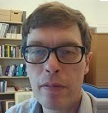3.1: Experimental Facts
( \newcommand{\kernel}{\mathrm{null}\,}\)
- Each nucleus has a (positive) charge Ze, and integer number times the elementary charge e. This follows from the fact that atoms are neutral!
- Nuclei of identical charge come in different masses, all approximate multiples of the “nucleon mass”. (Nucleon is the generic term for a neutron or proton, which have almost the same mass, mp=938.272MeV/c2, mn=MeV/c2.) Masses can easily be determined by analysing nuclei in a mass spectrograph which can be used to determine the relation between the charge Z (the number of protons, we believe) vs. the mass.
Nuclei of identical charge (chemical type) but different mass are called isotopes. Nuclei of approximately the same mass, but different chemical type, are called isobars.


